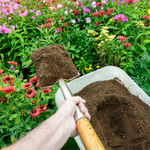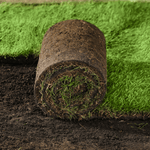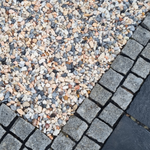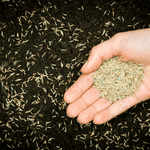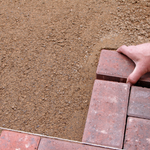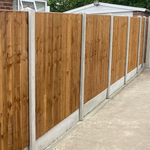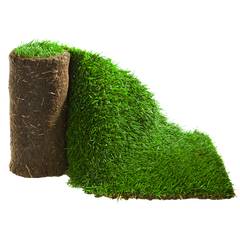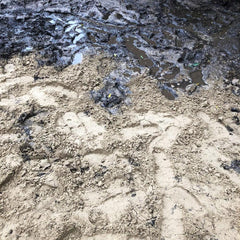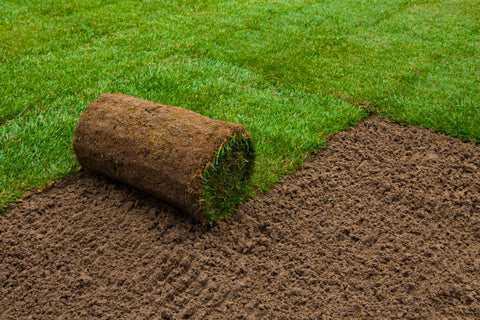It is a lot easier than you might think to lay turf down and create a new beautiful lawn...

1. Measure up
First things first – measure the area you want to create your lawn on so that you (or we) can work out how much topsoil or turf you’ll be needing.
You can read our quantity guide here.
As an approximation; one tonne of topsoil will cover around fifteen square metres at a depth of about 50mm (the minimum depth of good, quality topsoil you need to lay turf on or to sow seed in).
2. Sort out some soil
We recommend our Lawnmix® Topsoil for turfing or seeding - it is certified as being safe, fertile and free from contaminants. Lawnmix is a natural sandy loam making it ideal environment for turf roots to bed into, or grass seed to germinate. You can also opt for our Multi Purpose Topsoil which is a slightly less sandy mix - plus if you have surplus as you can use it all around your garden.
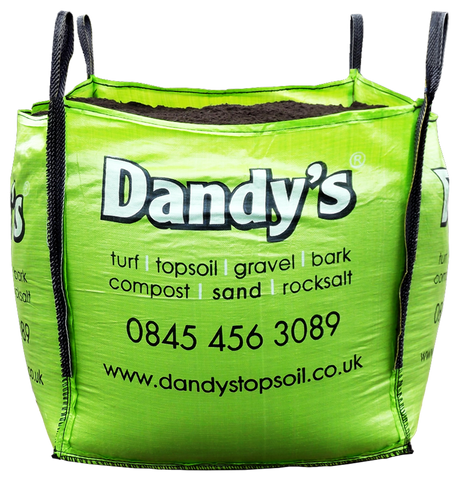
3. Order your turf
We advise getting your topsoil down a day or two before your turf is delivered - this is ensuring you have fresh turf that is laid straight away, giving you the best results.
Most suppliers, including Dandy's, sell turf by the square metre (m2) roll so you shouldn't have much problem working out the quantity you need. It is a good idea to over-estimate by 10% on the turf just in case you run out or must cut any weird shapes. If in doubt please call us on 01244 280008 and we can advise you.
We only stock the one type of Garden Lawn Turf as it is hardwearing and decorative - it's super popular with our Landscapers and retail customers alike, we shift over 100,000 m2 rolls per year!!
Any lawn turf you buy should be rolled out immediately and not left to sit rolled up on a pallet - the longer you leave the lawn turf the faster it will deteriorate and if the turf is hot it will start to "cook" (you can roll turf out onto a path or driveway and keep the turf well-watered if you can't lay the turf straight away).
4. Prepare your area and lay the soil
Start by stripping off any existing turf with a spade and pick up or rake out stones and debris such as roots. If laying down new soil use a wheelbarrow to make lots of small piles around your garden - this will make it easier to distribute the soil evenly and get a level lawn (don't forget to fill in pot holes first!)
Spread the topsoil at a good two inches to cover the entire area and then gently compact the ground using planks of wood or by treading the ground with your feet.
If your existing ground is very water logged and clay like our TurfSand Mix is perfect for giving you a well draining, water free surface. Make sure you rotovate it in and level off with planks.
If your existing soil is okay, then just ensure that it has been raked over and that it is free from rubble and any other pollutants.
You should not need to add fertilizer or weed killer to your soil unless you've had trouble growing on it previously or if it's full of weeds - if you do weed kill it at all then ensure that you follow the instructions on the weed killer accurately before laying your new turf, as some fertilizers may burn the roots of the new turf and you may end up doing more harm than good. If you choose to sow Grass Seed instead then this may be a step you wish to take as the soil will be exposed for a longer period of time.
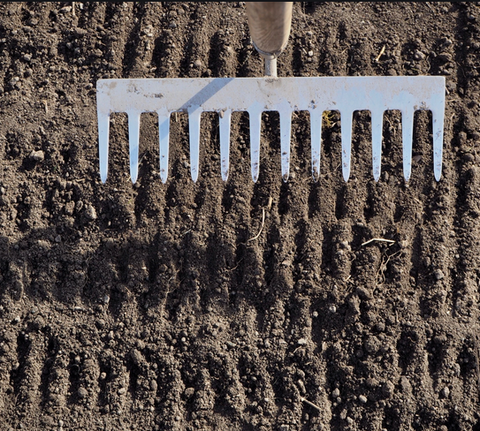
Once done give it a rake again, and if possible a quick hose over, just before you want to start laying out your turf.
5. Get turfing
After that it is easy - just roll out the lawn turf and make sure that the edges of each roll are nice and tight to each other and ensure that there are no visible gaps. Begin at one side or one corner and work across so that you face the bare soil. Avoid foot indentations in the newly laid turf by working from boards. We suggest doing a 'brick work' style laying patterns so that the joints are staggered.
Once you have covered the whole lawn trim off any rough edges using a straight edge. Any excess trimmings or rolls can go into your compost heap for rotting down and putting into your borders and beds.
Once it's all down you're nearly done. Next get your hose out - give the whole lawn a really good sprinkling until all of the turf is thoroughly soaked. Unless there is rain eminent you will need to repeat this process every day (morning or evening is best) until the turf has rooted in.

When to lay
Avoid laying new turf in extremely hot, dry weather or if the ground is particularly hard or frosty. March and September are great times of the year as the temperature and rainfall are the most suitable.
Avoid August all together if you can as this is when crane flies lay their eggs - the larvae will hatch a few months later and eat your lawn from the roots up!
Aftercare
To check for rooting; lift one of the corners of your lawn turf - you should see lots of little tiny bright white roots coming out of the turf. It will gradually become increasingly difficult to lift the turf corners as the turf roots in.
After a couple of weeks, you should have the beginnings of a nice garden lawn - if it's looking a little overgrown then put your lawn mower on the highest setting and give it a bit of a trim.
Do remember not to go too crazy straight away with your mowing as this can damage the grass plants - you don't want to remove more than 20% of the total height of the grass.
Put your feet up, get the barbie out, put the swing set out; whatever you want - you should now have a lovely new lawn to enjoy throughout the year!




